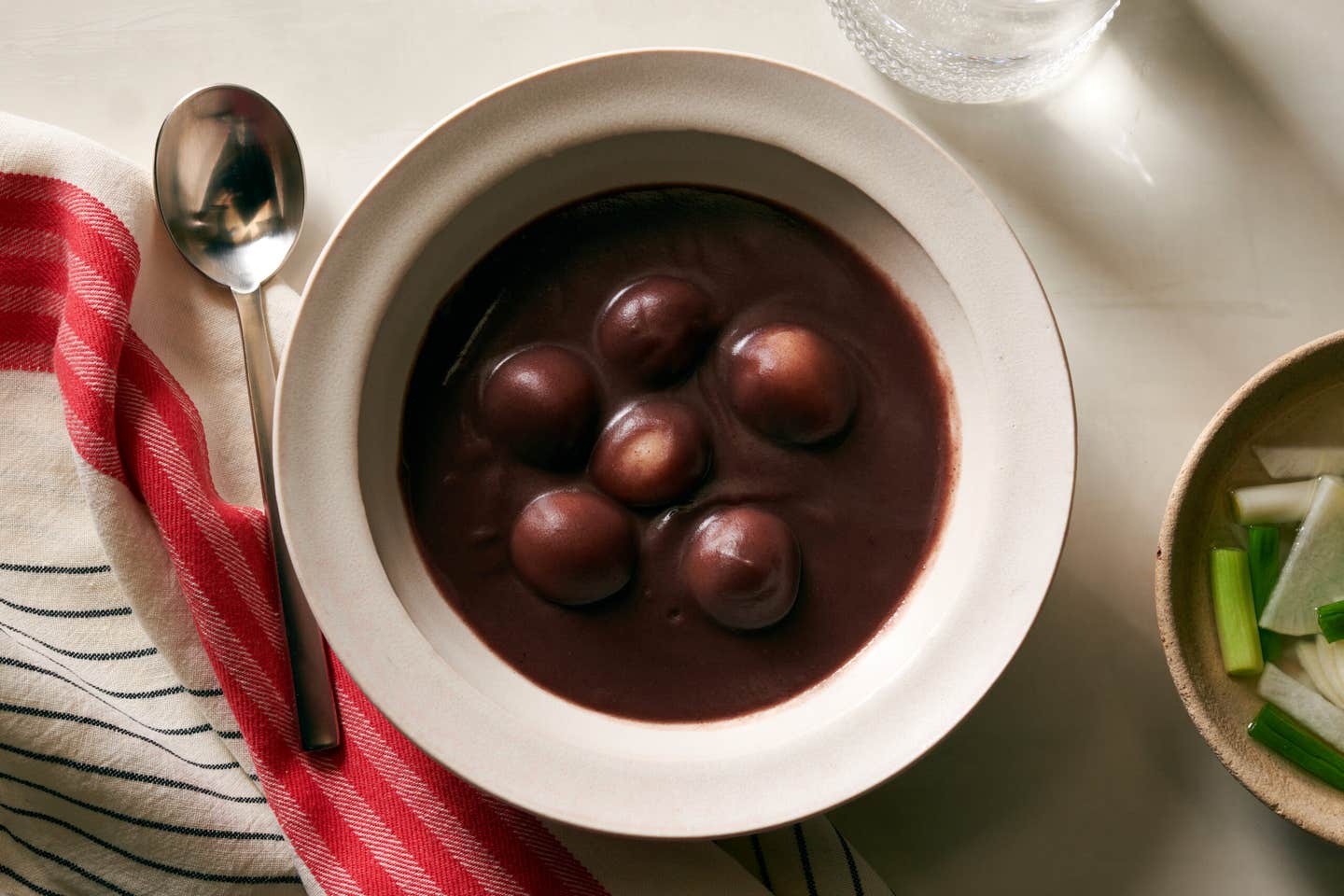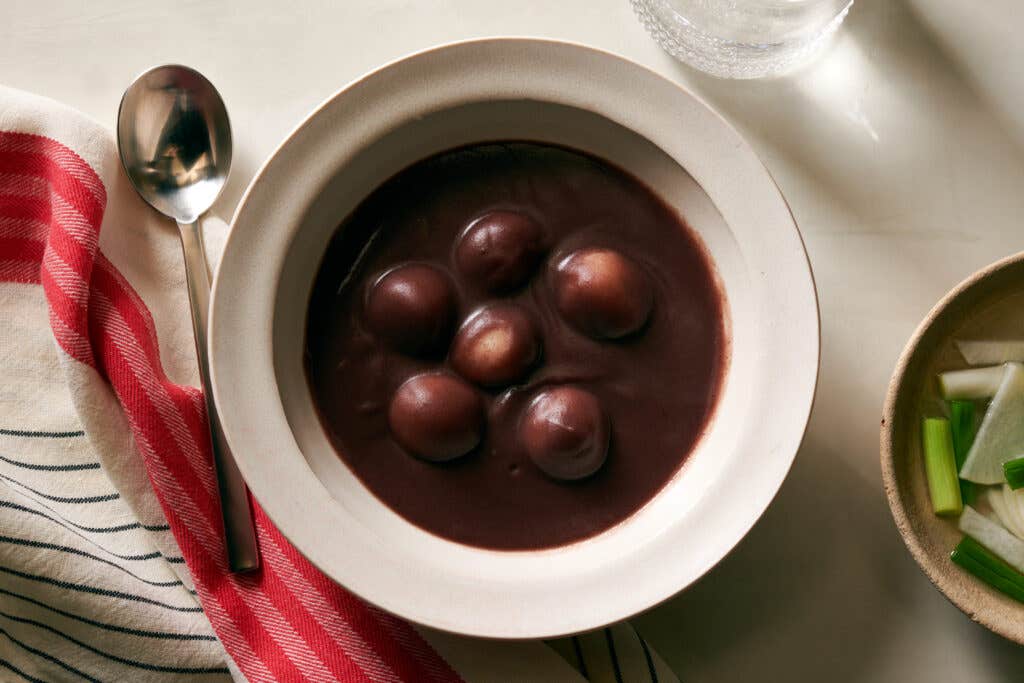
Korea Celebrates Winter Solstice with Pots of Patjuk
Mark the longest night of the year with a bowl of adzuki bean porridge.
Every winter, when the Earth reaches its maximum tilt in relation to the sun, the Northern Hemisphere experiences the longest night of the calendar year. The episode usually falls on December 21 or 22, and in Korean culture, it's the day for eating bowls of patjuk.
"Historically, Winter Solstice was viewed as akin to the beginning of the new year," says Mina Park, who owns the Korean eatery Shiku in Los Angeles. Because Dongji, as the day is known in Korean, marks the return of progressively longer daylight hours and heralds the advent of a new cycle, people refer to it as "Little New Year's Day." And fr Park, it's not a proper Dongji celebration until there's a pot of patjuk cooking on the stove.
This warming porridge combines red adzuki beans blended into a creamy purée, with glutinous-rice dough shaped into little white balls. The dumplings are thought to resemble birds' eggs, symbolizing new beginnings. "It was said that when you eat patjuk on Dongji, you turn one year older with the new year," Park explains.
The beans' red hue, the most auspicious color in Korean culture, "was believed to ward off evil spirits and bad luck," adds Ji Hye Kim, the chef behind the Korean restaurant Miss Kim in Ann Arbor. To symbolize the banishing of darkness and the beckoning of light, "bowls were placed around the house,"
To make patjuk, cooks boil the beans before blending and straining them into a luscious and creamy consistency. The glutinous-rice balls then cook directly in the purée. Kim learned early on that keeping a close eye on the pot is crucial: "Without constant and consistent stirring, the beans stick to the bottom of the pot, soon infecting the entire pot with the undesired stench of burn and smoke," says Kim. As a young girl, the chef learned from watching her mother that attentiveness to the bubbling porridge was always rewarded. "The warmth of her patjuk filled the entire house, promising something comforting and hearty."
Making this porridge may require consistent focus, but you can always ask your family for help. Grace Park, who founded the food blog Crazy Korean Cooking, fondly recalls helping her grandmother and great-grandmother shape soft rice dough into little spheres for patjuk. "It was fun because it's basically like edible playdoh," she says. "And you get to eat your creation afterwards." The tender, chewy spheres were always her favorite part of the dish.
Patjuk can be served sweet or savory, and as a child, Kim preferred hers with what she now calls "cloying sweetness". Her mother, however, usually served the porridge savory, and it wasn't until Kim grew up that she realized excessive sugar actually hid the dish's inherent flavors. "All the sweetness was an insulting coverup for the hearty red beans," she says. "Too much sugar masked the natural sweetness drawn out by slowly cooking them, stirred and stirred by someone with love."
When Winter Solstice rolls around, do as Korean cooks do and make a pot of patjuk—and count how many rice balls you serve each loved one. "The tradition is to have the same number of them as your age," Kim explains. If custom is to be followed, everyone gets to enjoy a bigger portion with each passing year.
Recipe

Keep Reading
Continue to Next Story










